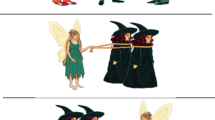Abstract
Children of ages 4, 6, and 8 years and college students attempted to imitate sentences containing combinations of nested and self-embedded relative clauses. Asymmetries in performance predicted from extensions of previous research were obtained at all ages. The hypothesis that these differences might be attributable to two structural characteristics of clause-containing sentences was supported by correlational analyses.
Similar content being viewed by others
References
Bever, T. (1970). The cognitive basis for linguistic structures. In Hayes, J.R. (ed.),Cognition and the Development of Language, Wiley, New York, pp. 279–362.
Chomsky, N. (1965).Aspects of the Theory of Syntax. M.I.T. Press, Cambridge, Mass.
Menyuk, P. (1969).Sentences Children Use. M.I.T. Press, Cambridge, Mass.
Miller, G., and Isard, S. (1964). Free recall of self-embedded English sentences.Information and Control 7: 292–303.
Author information
Authors and Affiliations
Additional information
This report is based on a doctoral dissertation submitted to the University of Washington.
Rights and permissions
About this article
Cite this article
Baird, R. Structural characteristics of clause-containing sentences and imitation by children and adults. J Psycholinguist Res 2, 115–127 (1973). https://doi.org/10.1007/BF01067205
Received:
Issue Date:
DOI: https://doi.org/10.1007/BF01067205




